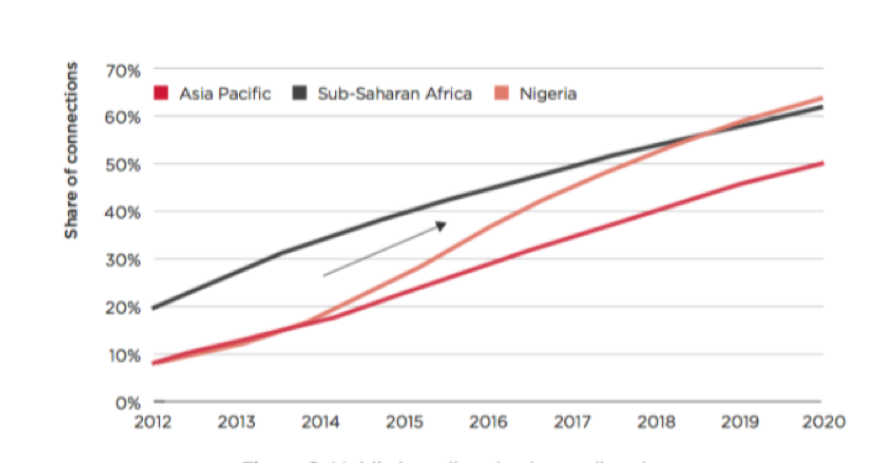By Roberta Sgariglia (International Trade, Finance, and Development ’18)
High speed internet and connectivity are among the main drivers of economic development in today’s information-intensive societies. Hence, in the context of the social sciences, increasing attention has been devoted to implications of technology adoption for traditional outcomes, such as migration, civic engagement and political participation, with particular emphasis on developing countries. As a matter of fact, numerous scholars argue that bridging the digital divide, hence fostering enhanced communication and ease of information access, has the potential to foster empowerment and beneficial innovation opportunities.
Therefore, this paper analyzes the impact of increased internet access on both internal and external migratory flows in Nigeria, where a national broadband expansion plan targeting existing infrastructure in urban areas was enacted in 2013. This effect is evaluated using two difference-in-difference estimations.
The first one assesses whether the policy was successful in enabling higher internet access rates. Convincing evidence was found to prove the effectiveness of the broadband expansion policy to date: in 2015, urban residents were approximately 7% more likely to have access to the internet on average, and these results are robust to different specifications.
The second estimation sets out to understand whether this effect triggered mobility and relocation. The analysis shows that there is a positive and significant effect in the order of 2%, robust to all specifications. However, the model’s explanatory power is low, as structural characteristics of the relevant sections of this dataset used pose significant limitations to the analyses and their potential for generalization. In any case, in the most basic form of the model, it appears that after the policy change urban residents were 1.5% more likely to move. This marginal impact becomes 1.9% once household fixed effects are accounted for. Finally, with respect to external migration probability, the overall significance of the model is not ascertained, so that even though increased internet access seems to have had a slightly negative effect on this outcome, we cannot safely conclude anything about this particular relationship.
As previously mentioned, results are hardly generalizable due to the structural limitations of the dataset, the lack of meaningful control variables and the mostly unexplored nature of migration dynamics in Nigeria.
Indeed, many of these setbacks arise from the relative scarcity or availability of surveys that include questions on information and communication technologies, particularly in developing countries. This in turn is due to the fact that data on mobile connectivity and other digital technology-related information is difficult to obtain, especially for rural communities. In this particular dataset the range of questions on the topic was very limited, which significantly narrowed the scope for the empirical analysis, and hampered the inclusion of meaningful control variables. Questions on mobility were also rather scarce, given that respondents were not directly asked about reasons for their decision: data on labor, education, health was collected in different sections and often could not be merged given that observations were not uniquely identified.
Consequently, the analysis started here can be meaningfully expanded and improved. Interesting extensions would explore the relationship between intrastate migration, a phenomenon which has only recently received the attention it requires, and internet usage: controlling for educational, health-related and employment decisions more accurately, it would be possible to better isolate the effect of internet access on migratory flows. In particular, it would be insightful to verify whether a causal relationship exists, perhaps by identifying a meaningful instrumental variable for this purpose. This would also shed light on whether determinants of internal migrations are actually comparable to those of external flows, as the literature seems to suggest. More specifically, the latter dynamics are largely unexplored in the specific context of Nigeria, and meaningful contributions could attempt to shed light on country-specific drivers of these migratory flows.
Finally, an interesting area of research which is somehow connected to the scope of this paper analyses the impact of digital technology on mobilization, both violent and peaceful, with important implications for policy making. Indeed, internet increases information availability and enhances communication, solving the collective action problem in some instances, while leading to secret coordination with anti-democratic objectives in others. Understanding through which channels, if any, mobilization works analogously to mobility, as well as which factors determine outcomes favorable to democratization rather than not is an extremely relevant question to answer.
Source: GSMA Intelligence

